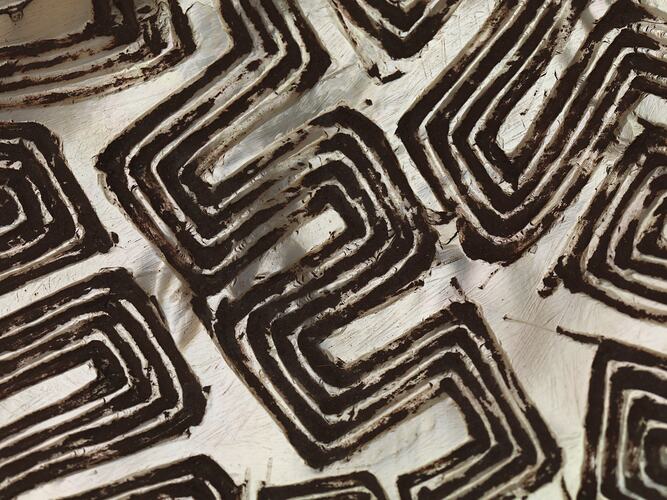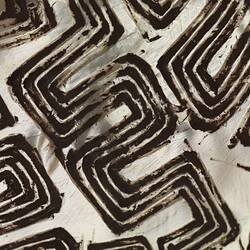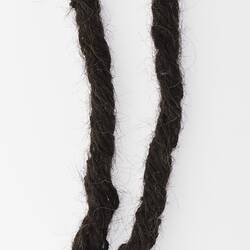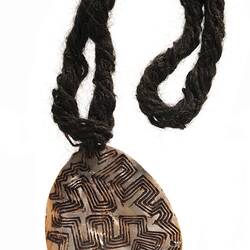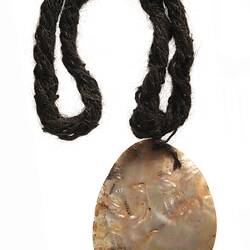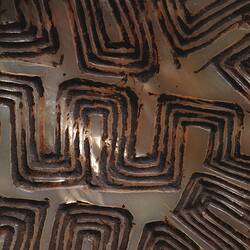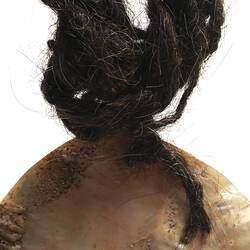Summary
Pearl shells from Broome and the Kimberleys are classically incised with zigzag and linear patterns thought to represent the shadows of storm clouds and lightning cast on the ground. The dots between the lines are droplets of rain. These pearl shells are traded over huge distances across the continent and those that find their way to central Australia are used in rain-making ceremonies. The anthropologist Charles P. Mountford recorded a ritual conducted by the Pitjantjatjara people in which such shells were used successfully to produce rain. These highly prized objects of trade were found as far afield as Port Augusta in South Australia.
Local Name
Riji
Physical Description
An ovoid shaped pearl shell pendant with a hole drilled at the top. A thick length of human hair string is secured through the hole. The inner surface is incised with concentric geometric zig zag patterning infilled with red ochre. The outer surface is scraped and polished.
More Information
-
Object/Medium
Ornament, neck
-
Maker
-
Cultural Groups
-
Locality
-
Date Produced
-
Date Collected
-
Object Measurements
585 mm (Length), 132 mm (Width), 25 mm (Height)
-
Classification
-
Date Made
-
Maker
-
Clan/Language Group
-
Place Made
-
Indigenous Region
-
Agent
Mr Robert Edwards - Museum of Victoria, 1980s
Bob Edwards was engaged in the 1980s by the Christensen Fund to purchase finely made and key Aboriginal objects at auction and from private collectors in Australia and overseas. -
Keywords
-
References
[Book] Ryan, Judith & Batty, Philip. 2011. Origins of Western Desert Art: Tjukurrtjanu.
-
Collection Names
-
Type of item
-
Discipline
-
Category
-
Collecting Areas
